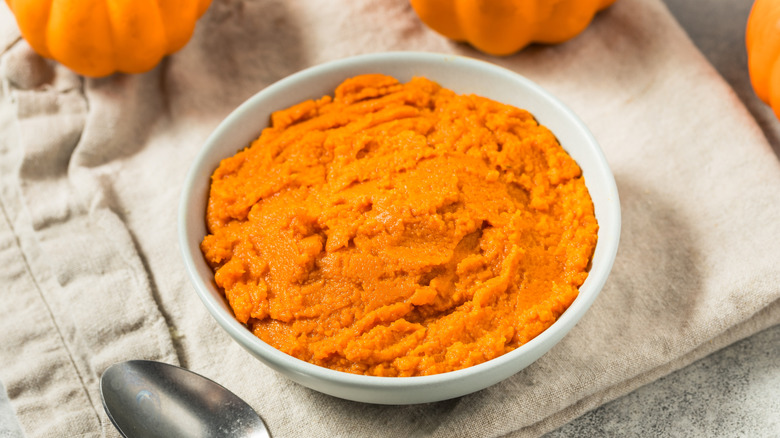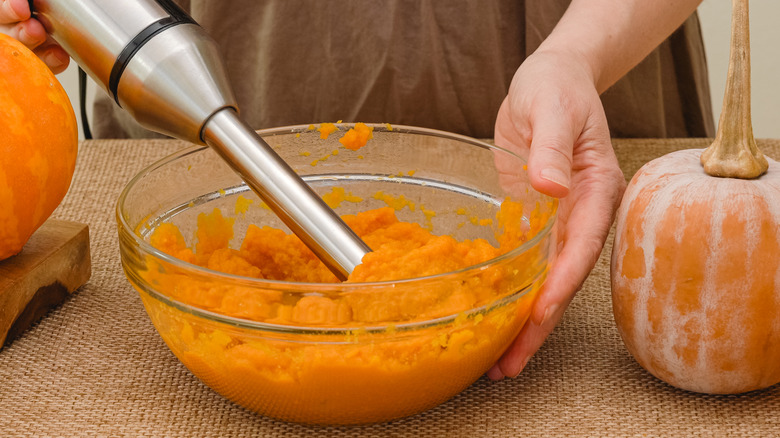Never Skip One Important Step When Adding Pumpkin Puree To Baked Goods
We may receive a commission on purchases made from links.
Baking season means cakes, pies, cookies, and more, and among the many go-to seasonal ingredients, pumpkin puree may be one of the most versatile. Sure, it's great in pie and pumpkin bread. But having a few cans on hand also lets you add a fall twist to store-bought egg-nog, bake a batch of fall-themed cornbread, or even upgrade your grilled cheese sandwich. However, there's one characteristic of the puree many people overlook: its high moisture content. In fact, pumpkins are about 90% water. It's important to remove some of this moisture, particularly if you're baking, or the puree may throw off your recipe, making cookies less dense and more cake-like, or ruining the texture of a cake.
If you've ever gutted a pumpkin at Halloween, you know there's a lot of liquid involved (which is one reason why the orange innards make for a great fall soup). The added moisture in pumpkin puree needs to be accounted for by reducing other liquids in the recipe or, for accuracy's sake, by removing it altogether. You can attempt to squeeze out some of that moisture just using your hands, but just as with steamed spinach, grabbing some and squeezing is inefficient and messy. A better way involves wringing the puree out inside a cheesecloth or sturdy paper towel. One other thing to remember: We're talking pure, unadorned pumpkin puree, not pumpkin pie filling, which has added sugar and spices.
Remove moisture rather than measuring for it
Pumpkin puree is made from roasted pumpkins that are blended. That means any moisture the gourd started with is now well mixed with the flesh. The challenge in attempting to compensate for the moisture in pumpkin puree is that it varies. The standard can of Libby's pure pumpkin puree is relatively dense and creamy, but some brands are much more watery. Homemade pumpkin purees will vary depending on the original moisture content of each pumpkin. That means rather than calculating the added water, the best option is to remove as much water as possible.
The easiest method involves tossing the puree into the center of a section of cheesecloth or sturdy paper towel, then twisting and squeezing any excess water into a bowl. You may want to repeat this process more than once for best results. Dish towels also work, but the weave is much tighter and you end up with a dirty dish towel. You can also substitute a large coffee filter for cheesecloth (remember they are more fragile, so press, don't twist).
Looking for other hacks to remove the moisture from pumpkin puree? If you have a large manual juice squeezer, that will work, though you'll be limited to about a cup of puree at a time. Or consider a potato ricer. They can handle a large amount of puree, and squeeze easily. You may want to lay a filter in the bottom of the press to avoid losing pulp.

